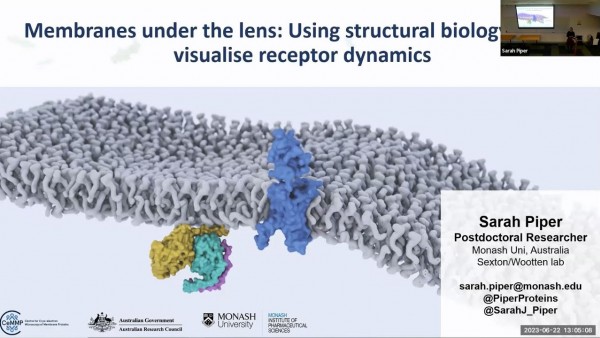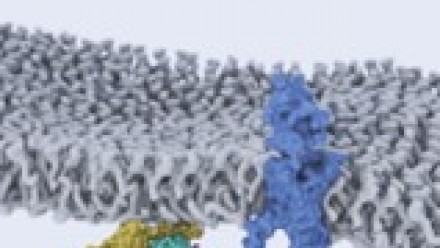BSB Seminar: Membranes under the lens: Using structural biology data to visualise receptor dynamics
Abstract
How can we tell engaging stories about complex biological processes that are invisible to the naked eye?
Scientists utilise a variety of techniques to investigate and visualise membrane receptors (gatekeepers of information) that transfer signals across membranes.
Cryo-electron microscopy (cryo-EM), one such state-of-the-art technique, has been at the forefront of structure determination and drug discovery for G protein-coupled receptors (GPCRs), ubiquitously expressed membrane proteins that are involved in a variety of physiological functions. Receptor activation involves a number of transient steps, through conformational and compositional changes, which fine-tune the downstream signalling of receptors and their transducer molecules. These processes are all highly dynamic.
To understand these receptors’ dynamics, we use 3D analysis of our cryo-EM data, e.g. 3D variability analysis in CryoSPARC and molecular dynamics simulations (MD). This dynamic data allows determination of key features for receptor activation and ligand selectivity. Moreover, the collective structural information provides a platform for the development of realistic and engaging 3D animations, illustrating important steps involved in receptor function. We can load our data into Blender3D, an open-source 3D computer graphics software, through which we can better analyse our data, inform drug development pipelines, and tell visual stories about these important proteins to a broad audience.
Biography
Dr Sarah Piper received her PhD at The University of Queensland in 2019, working in the groups of Prof Glenn King and Assoc Prof Michael Landsberg on cryo-electron microscopy of protein complexes. She is now a Postdoctoral Research Fellow at the Monash Institute of Pharmaceutical Sciences (MIPS) in Melbourne, specialising in biochemistry and cryo-electron microscopy of G protein-coupled receptors (GPCRs) in the labs of Prof Patrick Sexton and Prof Denise Wootten. She is also heavily involved in science communication and outreach at the ARC Centre for Cryo-electron Microscopy of Membrane Proteins (CCeMMP). Her animations and illustrations of protein structures through the centre, as well as through her social media accounts (@PiperProteins), are based on experimental data and can help to communicate biological processes or can simply be viewed as artistic pieces.







